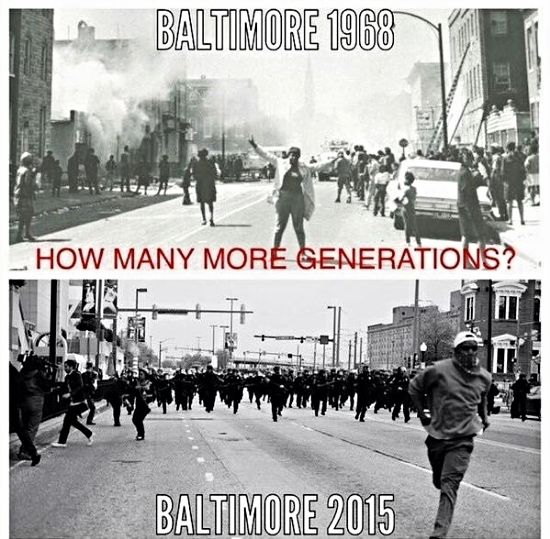I’m not even sure why I am asking this question, except right now I’m tired. Saw this graphic on twitter yesterday and it made me think. Not about B’More, though the news and coverage and outrages, and finger-pointing triggered my thoughts.
The debate will rage-on…the pundits will weigh-in, the politicians will take stances, the police will continue to abuse our communities, community leaders of all stripes will attempt to find band-aids, there will be hundreds of people quoting sanitized Martin Luther King at us, (never Malcolm or Gandhi) and the next city will be…take your pick.
Anyone who tries to talk about root causes will be accused of promoting, or condoning “violence” and “thuggery”. One must carefully parse how you talk about this. We will hear about good police and wounded police, and criminal youths till our ears bleed.
I’m tired.
Being tired doesn’t mean I give up. It just means I didn’t get more than two hours sleep, and I haven’t got the energy to rant right now. I’ll wait to see if there is a follow-up to the Washington Post news item that got buried in the flames. Somehow I doubt it.
I don’t even listen much to rap music but somehow the soundtrack in my head to all of this is more vintage N.W.A than Marvin Gaye.
I could write a long detailed piece on the neighborhoods I’ve lived in, the street protests aka “riots” I’ve been in, the sane solutions that get proffered (and ignored) but that wouldn’t make much of a difference right now.
I could ask…what will…and how long will it take?
Too tired to attempt answering my own question.

25 comments